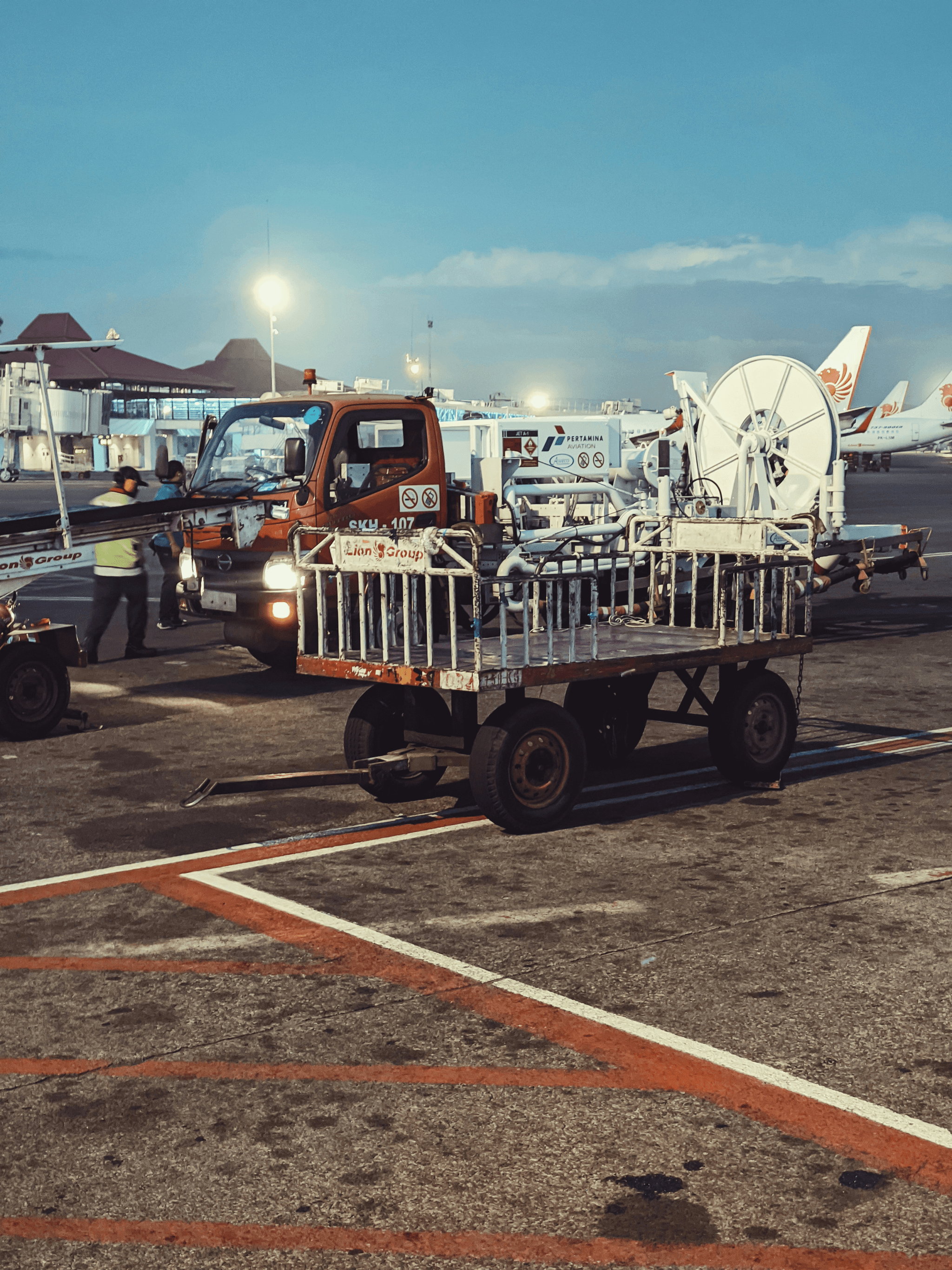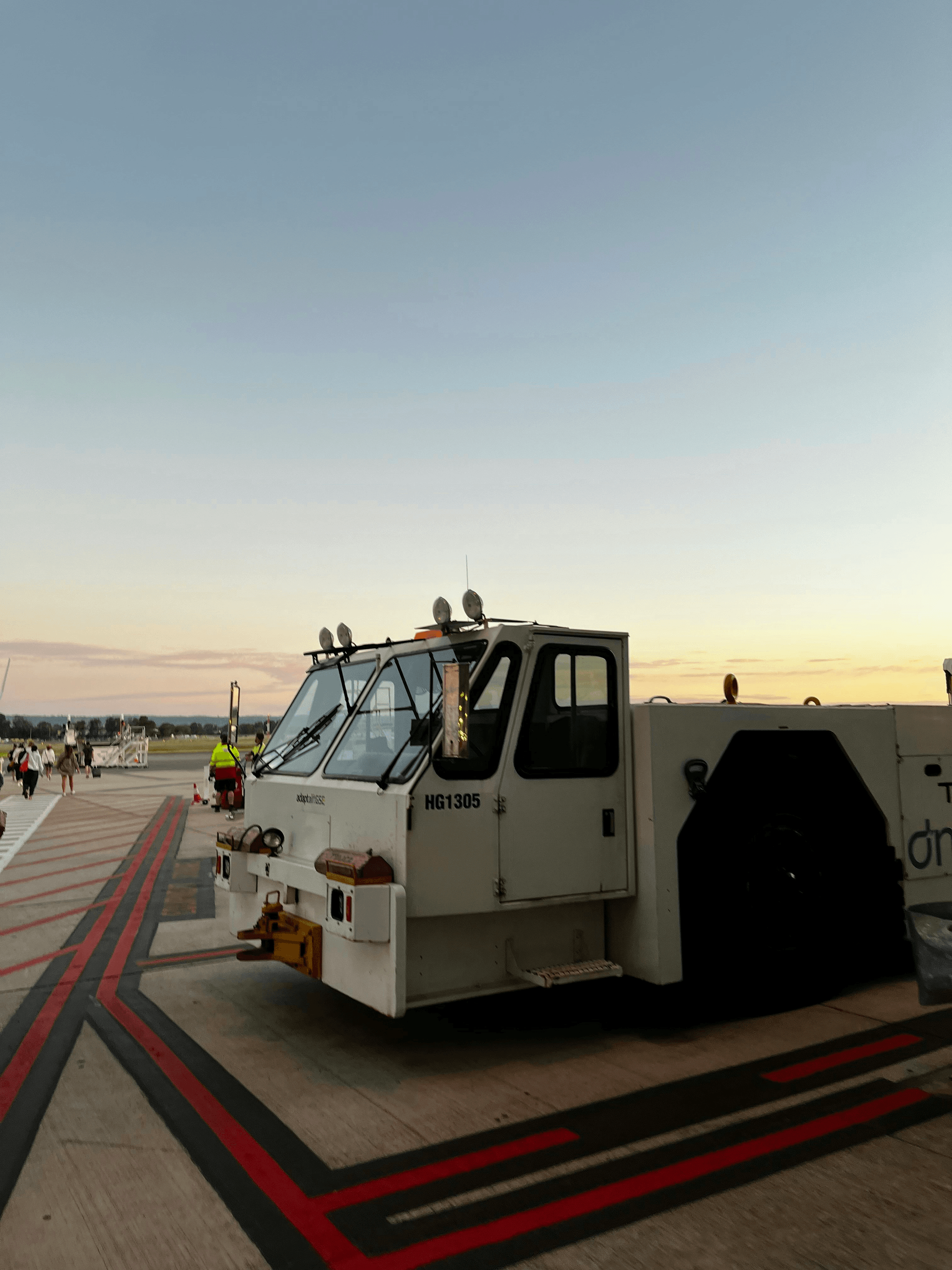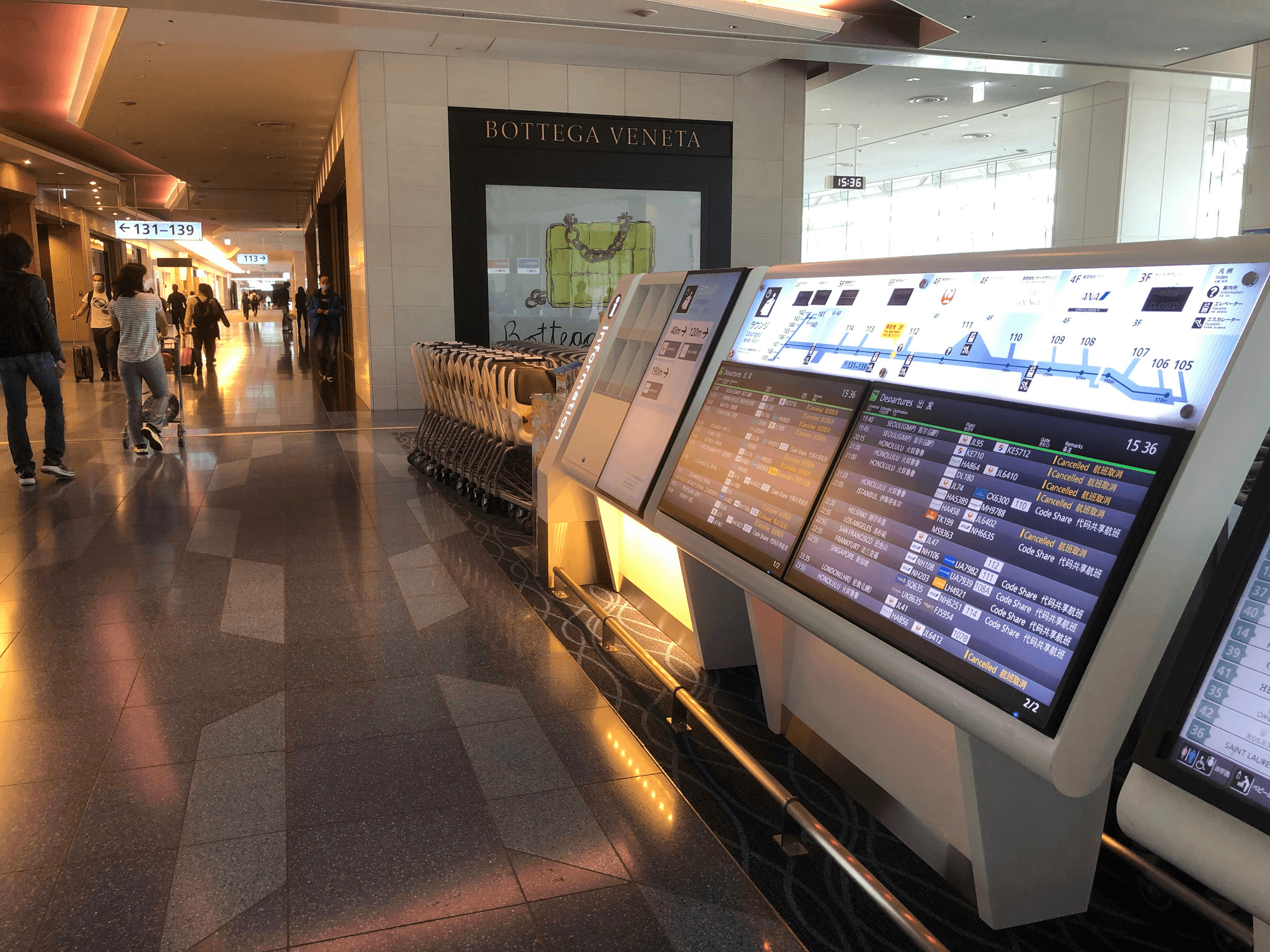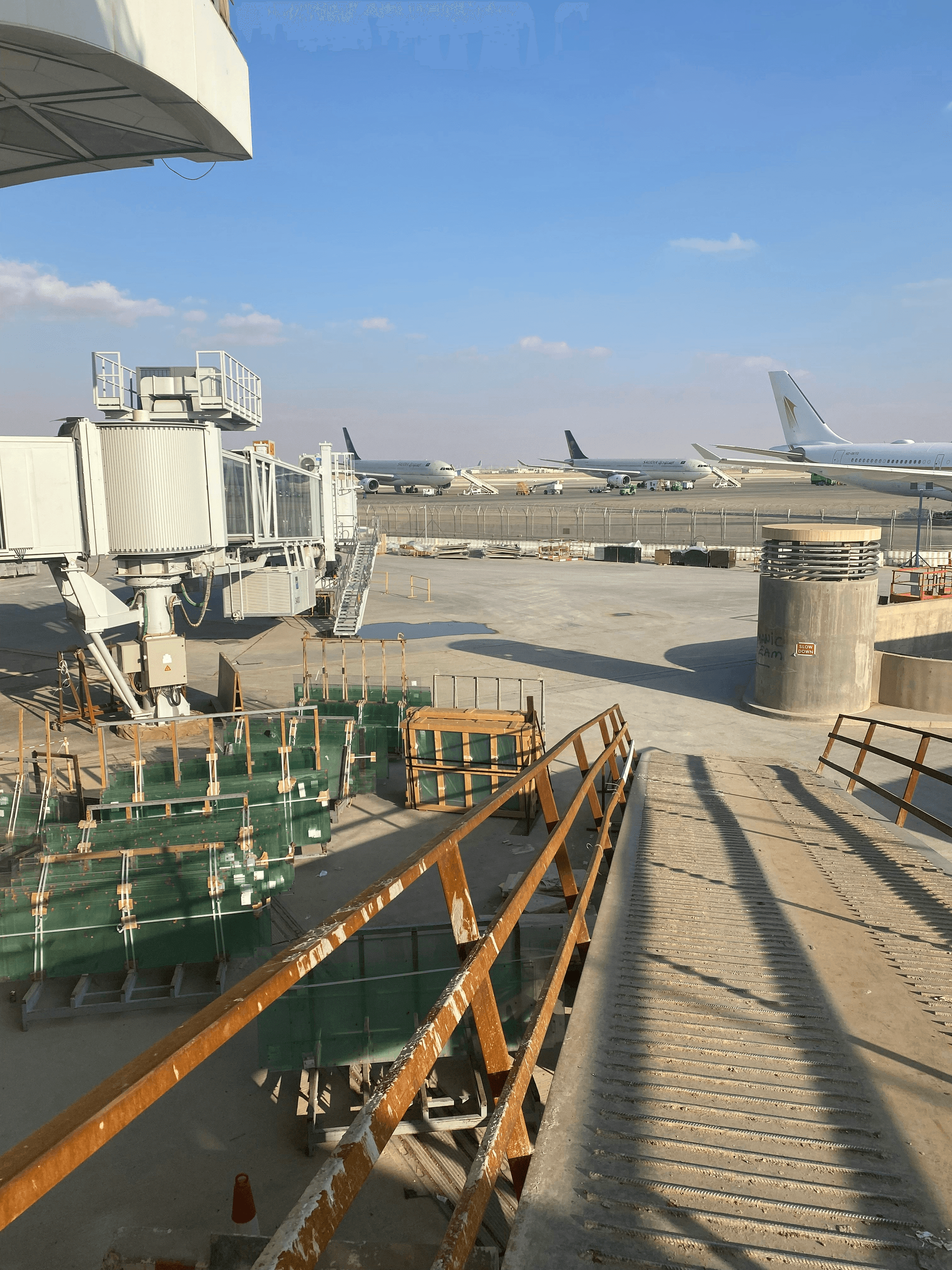Introduction

In the ever-evolving landscape of aviation, modern airport equipment plays a pivotal role in ensuring efficient operations and passenger safety. From the essential airport equipment list that outlines the basic tools needed for ground support to advanced technologies like friction tester machines and pavement equipment, every component is crucial for seamless airport functionality. As we explore these innovations, it becomes clear that understanding aviation ground support equipment is vital for grasping how airports are transforming to meet future demands.
Understanding Modern Airport Equipment
Modern airport equipment encompasses a wide range of tools and technologies designed to facilitate various operations at an airport. This includes everything from baggage handling systems to advanced weather observation systems (AWOS) that help manage flight schedules based on real-time conditions. Familiarity with this equipment not only enhances operational efficiency but also contributes significantly to passenger satisfaction and safety.
Key Technologies in Aviation Ground Support
Key technologies in aviation ground support have revolutionized how airports operate, making them more efficient and responsive to changing conditions. Innovations such as automated baggage handling systems, electric tugs for aircraft movement, and state-of-the-art friction tester machines ensure that every aspect of ground handling meets stringent safety standards while optimizing performance. These advancements not only streamline processes but also reduce operational costs and environmental impact.
The Future of Airport Operations
Looking ahead, the future of airport operations will be shaped by technological advancements and increasing automation across all facets of aviation ground support equipment. The integration of smart technologies, including IoT devices that enhance communication between various airport systems, will further improve efficiency and safety measures at airports worldwide. As we embrace these changes, it’s essential to stay informed about emerging trends such as enhanced pavement equipment and sophisticated AWOS systems that will redefine our travel experiences.
Overview of Airport Equipment

Understanding the various types of airport equipment is essential for efficient airport operations. This section will outline an essential airport equipment list, delve into innovations in aviation ground support equipment, and explore the critical role of friction tester machines in maintaining safety standards.
Essential Airport Equipment List
An airport equipment list typically includes a wide array of tools and machinery designed to facilitate smooth operations. Key items on this list are baggage handling systems, aircraft tugs, fuel trucks, and ground power units. Each piece of airport equipment plays a vital role in ensuring that flights depart and arrive on time while adhering to safety regulations.
In addition to these standard items, specialized aviation ground support equipment such as de-icing vehicles and boarding bridges are also crucial. These pieces not only enhance operational efficiency but also improve passenger experience at the airport. By investing in a comprehensive array of essential airport equipment, airports can better manage the increasing demands of air travel.
Innovations in Aviation Ground Support Equipment
The world of aviation is ever-evolving, with continuous innovations shaping the landscape of ground support equipment. Recent advancements include electric-powered tugs that reduce emissions while enhancing maneuverability on crowded tarmacs. Additionally, automated baggage handling systems have significantly decreased turnaround times for aircraft.
Innovative technologies such as real-time tracking systems for luggage are also transforming how airports operate. These enhancements ensure that passengers have peace of mind regarding their belongings while optimizing workflow for ground crew members. The ongoing development in aviation ground support equipment reflects an industry commitment to sustainability and efficiency.
The Role of Friction Tester Machines
Friction tester machines play a pivotal role in maintaining runway safety at airports by measuring surface friction levels under various conditions. These devices help ensure that pavement equipment meets required safety standards by providing data necessary for maintenance decisions and operational adjustments during adverse weather conditions like rain or snow.
Using friction tester machines allows airport authorities to proactively manage runway surfaces, thereby reducing the risk of accidents caused by slippery runways during takeoff or landing. Regular testing helps maintain compliance with regulations set forth by aviation governing bodies worldwide, ensuring safe travel for all passengers and crew members alike.
Moreover, integrating advanced technology into friction testing processes enhances precision and reliability in data collection—critical factors when making informed decisions about runway maintenance schedules or necessary repairs to pavement equipment. As airports continue to prioritize safety through innovative solutions like these machines, they reinforce their commitment to providing secure travel experiences.
Essential Ground Support Equipment

Ground support equipment (GSE) is the unsung hero of airport operations, ensuring that everything runs smoothly behind the scenes. This essential airport equipment includes a wide range of tools and machines designed to assist in various aviation-related tasks. From fueling aircraft to transporting luggage, GSE is crucial for maintaining airport efficiency and safety.
Types of Airport Ground Support Equipment
The types of airport ground support equipment are as diverse as the aircraft themselves. Common categories include refueling trucks, baggage tugs, pushback tractors, and lavatory service vehicles. Additionally, specialized tools like friction tester machines play a vital role in assessing runway conditions, ensuring that safety standards are met before flights take off or land.
Another important category includes maintenance vehicles designed for routine checks and repairs on aircraft while they are on the ground. Each piece of equipment on the airport equipment list serves a specific purpose that contributes to overall operational efficiency. The integration of advanced technology into these machines enhances their functionality and reliability.
Major Manufacturers of Ground Support Equipment
When it comes to major manufacturers of ground support equipment, several names stand out in the aviation industry. Companies like TLD Group, JBT AeroTech, and Mulag have established themselves as leaders in producing high-quality GSE that meets rigorous safety standards. These manufacturers continually innovate their products to keep pace with advancements in technology and changing demands within airports.
Moreover, many manufacturers focus on sustainability by developing electric or hybrid versions of traditional GSE to reduce carbon footprints at airports worldwide. With a growing emphasis on eco-friendly practices in aviation, these companies are paving the way for greener airport operations through their innovative designs. As competition increases among manufacturers, airports benefit from a wider selection of efficient and reliable ground support options.
Compliance and Safety Standards
Compliance with safety standards is non-negotiable when it comes to airport operations; this ensures both passenger safety and efficient functioning of all systems involved in aviation ground support equipment usage. Regulatory bodies such as the Federal Aviation Administration (FAA) set stringent guidelines that must be adhered to by all entities operating within an airport environment. These regulations cover everything from maintenance procedures for pavement equipment to operational checks for friction tester machines used during runway assessments.
Additionally, training programs for personnel handling GSE emphasize adherence to these compliance measures so that every team member understands their responsibilities regarding safety protocols. Regular inspections ensure that all pieces of airport equipment remain functional while meeting required specifications set forth by governing bodies like OSHA (Occupational Safety and Health Administration). Ultimately, maintaining compliance not only safeguards personnel but also enhances overall operational efficiency at airports.
Pavement Equipment in Airports

Pavement equipment plays a critical role in maintaining the safety and functionality of airport runways and taxiways. This essential airport equipment ensures that surfaces are kept in optimal condition, allowing for smooth takeoffs and landings. Without effective pavement maintenance, the risk of accidents increases, making it crucial for airports to invest in high-quality pavement equipment.
Importance of Pavement Equipment
The importance of pavement equipment cannot be overstated when it comes to aviation ground support equipment. Well-maintained pavements directly affect aircraft performance, passenger safety, and operational efficiency at airports. Additionally, using advanced friction tester machines helps assess surface conditions, ensuring that runways meet safety standards necessary for safe aircraft operations.
Incorporating robust pavement equipment into airport operations not only enhances safety but also extends the lifespan of runway surfaces. Regular inspections and maintenance facilitated by this specialized equipment can prevent costly repairs down the line. Ultimately, investing in quality pavement solutions is an investment in both safety and efficiency for any airport.
Notable Pavement Equipment Innovations
Recent innovations in pavement equipment have transformed how airports manage their runway infrastructure. For instance, advancements in automated friction tester machines now allow for real-time monitoring of surface conditions with greater accuracy than ever before. This technology not only improves safety but also streamlines maintenance schedules based on actual data rather than estimates.
Moreover, modern pavement rehabilitation techniques utilize specialized machinery that reduces downtime during repairs while enhancing durability and performance of runway surfaces. Additionally, some manufacturers have introduced eco-friendly solutions that minimize environmental impact during construction or maintenance activities at airports. These innovations represent a significant step forward in ensuring that aviation ground support equipment meets the evolving demands of modern air travel.
Leading Brands in Airport Pavement Equipment
When it comes to leading brands specializing in airport pavement equipment, several names stand out due to their commitment to quality and innovation. Companies like Caterpillar and Volvo are well-known for their reliable machinery designed specifically for maintaining airport surfaces efficiently while adhering to strict compliance standards. Their extensive product lines include everything from asphalt pavers to compactors tailored for aviation needs.
Another noteworthy player is GOMACO Corporation, which has made a name for itself with its advanced concrete paving technologies suitable for airfield applications. These brands continuously push the envelope by integrating new technologies into their products to enhance performance and reliability further within aviation ground support settings like airports worldwide.
Advanced Weather Observation Systems

In the realm of airport operations, advanced weather observation systems play a crucial role in ensuring safety and efficiency. These systems provide real-time data that helps in making informed decisions regarding flight schedules and ground handling processes. Consequently, they are an indispensable component of modern airport equipment.
What is an AWOS System?
An AWOS (Automated Weather Observing System) is a sophisticated network designed to collect meteorological data at airports. This system measures critical parameters such as temperature, wind speed, visibility, and atmospheric pressure, providing vital information for pilots and ground crews alike. By integrating various sensors and technology, the AWOS system becomes an essential part of any airport equipment list focused on enhancing aviation safety.
Benefits of Airport AWOS in Operations
The benefits of implementing an AWOS system in airport operations are manifold. First and foremost, it enhances situational awareness for air traffic control and flight crews by delivering accurate weather updates in real time. Furthermore, this information aids ground support teams in managing aviation ground support equipment more effectively during adverse weather conditions—think snow plows or even friction tester machines that ensure runway safety.
Top AWOS Systems in the Market
When it comes to selecting top-tier AWOS systems for airports, several names stand out due to their reliability and performance. Companies like Vaisala and Campbell Scientific have developed robust systems that cater to various operational needs within the aviation sector. These advanced airport awos solutions not only improve overall safety but also streamline airport operations by providing timely weather insights crucial for effective decision-making.
The Rise of Smart Airport Technologies

The aviation industry is experiencing a technological renaissance, particularly with the rise of smart airport technologies. These innovations are transforming the landscape of airport operations, enhancing efficiency and safety while providing better passenger experiences. From IoT integration to advanced weather observation systems (AWOS), modern airport equipment is evolving to meet the demands of contemporary air travel.
Integration of IoT in Airport Equipment
The Internet of Things (IoT) has become a game-changer in the realm of airport equipment, enabling real-time data collection and communication among various systems. By integrating IoT sensors into aviation ground support equipment, airports can monitor everything from baggage handling to runway conditions more effectively. This connectivity not only streamlines operations but also enhances safety measures, as friction tester machines can relay critical information about runway surfaces directly to maintenance teams.
Moreover, IoT allows for predictive maintenance on essential airport equipment, reducing downtime and operational disruptions. For instance, pavement equipment equipped with smart sensors can alert personnel when repairs are needed before issues escalate into costly shutdowns. As airports adopt these technologies, they will be better positioned to handle increasing passenger volumes and complex logistical challenges.
Case Studies of Smart Airports
Several airports around the world are leading the charge in adopting smart technologies that revolutionize their operations. Singapore Changi Airport is a prime example; it utilizes an integrated system that connects various airport equipment for seamless communication and coordination among staff members. Innovations such as automated baggage handling systems and advanced AWOS contribute significantly to its reputation as one of the best airports globally.
Another noteworthy case is Hamad International Airport in Qatar, which employs cutting-edge technology including AI-driven analytics for optimizing resource allocation and enhancing passenger flow management. Their implementation of smart parking solutions and real-time flight updates via mobile apps demonstrates how technology can significantly improve traveler experience while ensuring efficient use of aviation ground support equipment. These examples illustrate how embracing smart technologies can set an airport apart from its competitors.
Future Trends in Advanced Airport Equipment
Looking ahead, several trends are poised to shape the future landscape of advanced airport equipment further. The continued evolution of AWOS systems will likely see enhancements in accuracy and response times due to advancements in meteorological technology combined with AI algorithms that predict weather patterns more reliably than ever before. Such improvements will be crucial for ensuring safe takeoffs and landings amid increasingly unpredictable weather conditions.
Additionally, there’s growing interest in sustainability within aviation ground support equipment development; future designs may focus on energy-efficient machinery that reduces carbon footprints while maintaining high operational standards at airports worldwide. The incorporation of renewable energy sources into pavement equipment operations could also become standard practice as environmental consciousness rises within the industry.
Conclusion

In conclusion, the landscape of airport operations is rapidly evolving, driven by advancements in airport equipment and technology. From innovative aviation ground support equipment to sophisticated pavement equipment and weather observation systems like AWOS, the industry is embracing change to enhance efficiency and safety. As we look ahead, it's clear that understanding and adapting to these changes will be crucial for optimizing airport functionality.
Key Takeaways on Airport Equipment
One of the key takeaways regarding airport equipment is the importance of having a comprehensive airport equipment list that includes all essential ground support tools. This list not only aids in operational efficiency but also ensures compliance with safety standards across various types of aviation ground support equipment. Additionally, specialized tools like friction tester machines play a vital role in maintaining runway safety and performance.
The Impact of Technology on Aviation
Technology has dramatically transformed aviation, influencing everything from air traffic management to passenger experience at airports. The integration of advanced systems such as AWOS has improved decision-making related to weather conditions, thereby enhancing operational safety and efficiency. Furthermore, innovations in smart airport technologies are paving the way for a more interconnected and responsive aviation environment.
